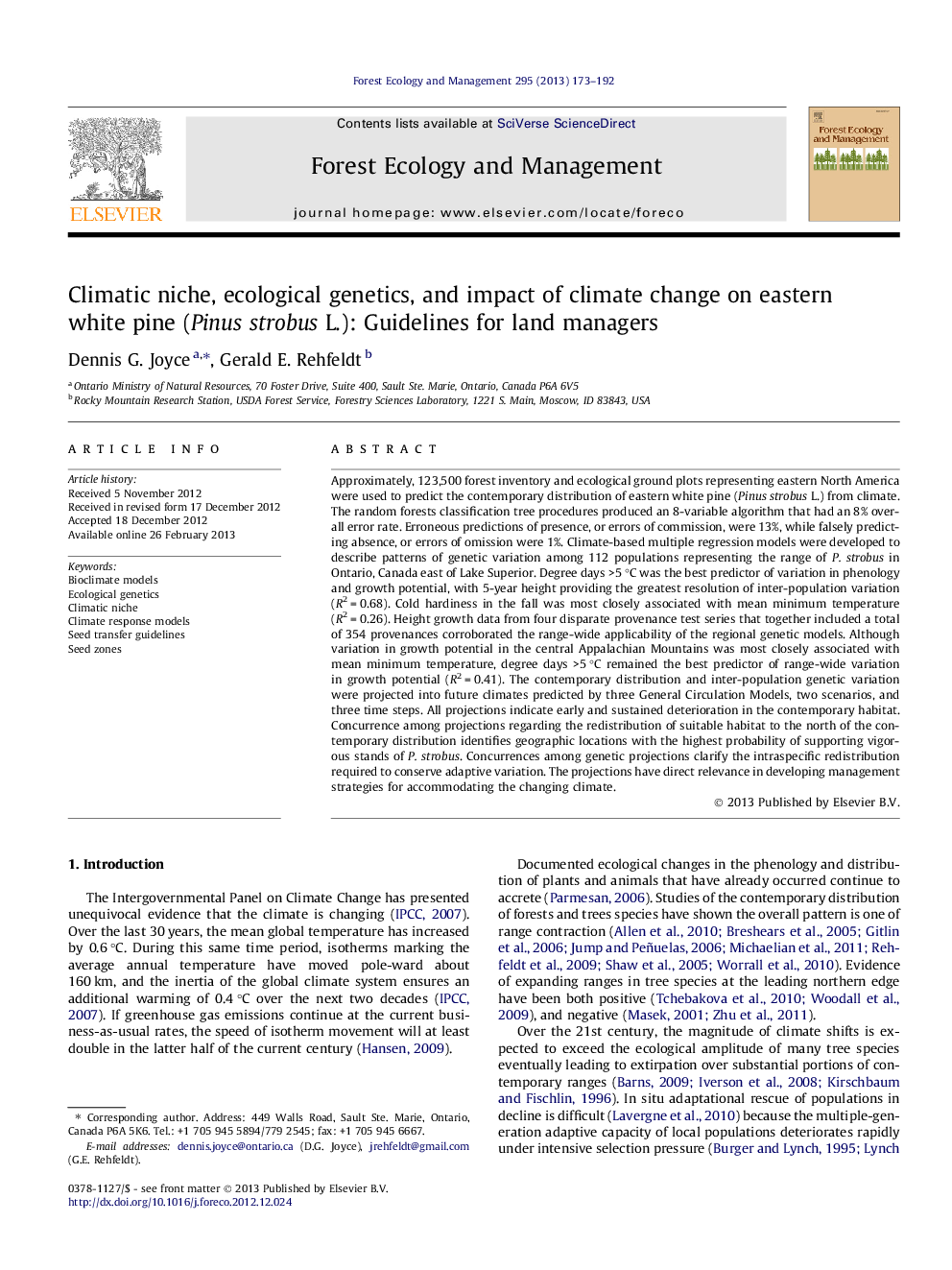| کد مقاله | کد نشریه | سال انتشار | مقاله انگلیسی | نسخه تمام متن |
|---|---|---|---|---|
| 86864 | 159217 | 2013 | 20 صفحه PDF | دانلود رایگان |

Approximately, 123,500 forest inventory and ecological ground plots representing eastern North America were used to predict the contemporary distribution of eastern white pine (Pinus strobus L.) from climate. The random forests classification tree procedures produced an 8-variable algorithm that had an 8% overall error rate. Erroneous predictions of presence, or errors of commission, were 13%, while falsely predicting absence, or errors of omission were 1%. Climate-based multiple regression models were developed to describe patterns of genetic variation among 112 populations representing the range of P. strobus in Ontario, Canada east of Lake Superior. Degree days >5 °C was the best predictor of variation in phenology and growth potential, with 5-year height providing the greatest resolution of inter-population variation (R2 = 0.68). Cold hardiness in the fall was most closely associated with mean minimum temperature (R2 = 0.26). Height growth data from four disparate provenance test series that together included a total of 354 provenances corroborated the range-wide applicability of the regional genetic models. Although variation in growth potential in the central Appalachian Mountains was most closely associated with mean minimum temperature, degree days >5 °C remained the best predictor of range-wide variation in growth potential (R2 = 0.41). The contemporary distribution and inter-population genetic variation were projected into future climates predicted by three General Circulation Models, two scenarios, and three time steps. All projections indicate early and sustained deterioration in the contemporary habitat. Concurrence among projections regarding the redistribution of suitable habitat to the north of the contemporary distribution identifies geographic locations with the highest probability of supporting vigorous stands of P. strobus. Concurrences among genetic projections clarify the intraspecific redistribution required to conserve adaptive variation. The projections have direct relevance in developing management strategies for accommodating the changing climate.
► We model and map the realized climatic niche of Pinus strobus.
► We project the impact of climate change on geographic distribution suitable habitat.
► We model and map the pattern of ecological genetic variation in P. strobus.
► We project the future distribution of suitable habitat for genetic climatypes.
► Management applications for accommodating the changing climate are discussed.
Journal: Forest Ecology and Management - Volume 295, 1 May 2013, Pages 173–192